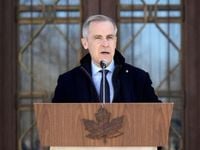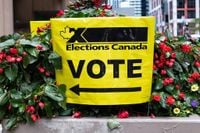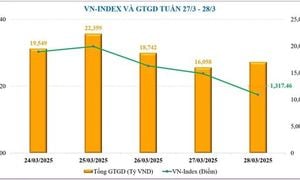As the political climate in Canada heats up, Prime Minister Mark Carney has called for a snap federal election, set to take place on Monday, April 28, 2025. This decision comes amid rising tensions with the United States and a significant shift in voter dynamics across the country. On Sunday, March 23, 2025, Governor General Mary Simon granted Carney's request to dissolve Parliament, paving the way for what could be a historic election.
With Canadians preparing to head to the polls, the election season is marked by a noteworthy generational divide. Traditionally, younger voters have leaned towards progressive policies, but recent polls indicate a surprising trend: younger Canadians are increasingly favoring conservative candidates. This election could see a battle between the desires of younger voters seeking change and older voters who prefer the status quo.
A recent Leger poll revealed that while Liberal Leader Mark Carney has garnered significant support among seniors—52 percent of whom intend to vote Liberal—young voters aged 18 to 34 show a preference for the Conservative Party, with 39 percent leaning Conservative compared to 37 percent for the Liberals. This shift is indicative of broader economic concerns, particularly among younger demographics who feel the brunt of wage stagnation and skyrocketing housing costs.
As the campaign unfolds, Carney has made a bold promise to cut the lowest income tax bracket by one percentage point, which he claims will save the average two-income family about $825 annually. He emphasized the need for “big change, positive change” as he seeks to distinguish his leadership from that of former Prime Minister Justin Trudeau. Carney's commitment to reducing government spending, which has surged during Trudeau's tenure, further highlights his intention to shift the Liberal platform.
Carney's campaign launch was marked by a speech outside Rideau Hall, where he articulated his vision for a new Canadian economy that works for everyone. He stated, "I am asking for a strong, positive mandate to deal with President Donald Trump and to build a new Canadian economy that works for everyone." This statement underscores the critical role that U.S.-Canada relations will play in the upcoming election.
In a stark contrast, Conservative Leader Pierre Poilievre has positioned himself as a defender of Canadian sovereignty against U.S. tariffs and trade policies. During his campaign events, Poilievre has been vocal about the need to maintain Canada’s independence from American influence, stating, "I will insist that the president recognize the independence and sovereignty of Canada. I will insist that he stop tariffing our nation." His promises to cut foreign aid to fund military enhancements resonate particularly with voters concerned about national security.
Polling data indicates that the election is shaping up to be a referendum on various pressing issues. For older voters, the top ballot issue is “dealing with Donald Trump,” with 50 percent identifying it as their primary concern. In contrast, younger voters prioritize issues such as reducing the cost of living (47 percent), making housing more affordable (28 percent), and growing the economy (23 percent). This generational gap illustrates the differing priorities that could significantly impact the election's outcome.
The rise of the Conservative Party among younger voters marks a significant departure from traditional voting patterns seen in other Western democracies, where older voters typically lean conservative. According to Abacus Data, the average Canadian aged 25 is now more likely to vote Conservative than their 65-year-old counterpart. This trend has been gaining momentum since Pierre Poilievre assumed leadership of the Conservative Party and has been a focal point of his campaign strategy.
As the election date approaches, the political landscape remains fluid. Polling firms have reported a surge in support for the Liberal Party under Carney's leadership, but uncertainty looms as many voters express a lack of familiarity with Carney. His recent gaffes during public appearances, including mispronouncing the names of candidates and confusing significant historical events, have raised questions about his readiness for the role.
Carney's comments during a recent press conference, where he referred to Poilievre as a "Canadian Trump," have also sparked controversy. He criticized Poilievre's leadership style as “negative” and divisive, drawing parallels between the Conservative leader's rhetoric and that of former U.S. President Donald Trump. This characterization may resonate with voters who are wary of divisive politics.
As Canadians prepare to cast their votes, the election will not only determine the future direction of the government but also reflect the evolving priorities of its electorate. With Carney attempting to navigate the complexities of his new role and the rising popularity of the Conservative Party among younger voters, the outcome of the April 28 election remains uncertain.
In the meantime, Elections Canada has outlined the various ways Canadians can participate in the electoral process. Voters can cast their ballots on election day at their assigned polling stations, with advance voting available from April 18 to April 21. Mail-in voting is also an option for those who apply by April 22. The agency emphasizes the importance of ensuring that all voters are prepared and aware of their rights and responsibilities as they head to the polls.
The upcoming federal election in Canada is set against a backdrop of economic uncertainty and shifting voter demographics. As young Canadians increasingly embrace conservative values, the political landscape is poised for a significant transformation. With both major parties adapting their strategies to appeal to this diverse electorate, the April 28 election promises to be one of the most pivotal in recent memory.







